A 2024 survey registered more than 1.1 billion websites on the internet. How can your online site or e-commerce store hope to get through the online crowds to reach its audience?
One modern method is to base your marketing strategy around the user experience (UX).
For e-commerce, the UX from your website's mobile apps sets the tone. By combining UX design with your marketing tactics, you get UX marketing.
In this guide, we’ll explain how UX marketing can improve conversion for your online business.
Article Shortcuts:
- What Makes Up an Excellent UX?
- What is the Difference Between UX Marketing and CX Marketing?
- Why is UX Marketing Important?
- Tips to Master UX Marketing as a Solopreneur or Startup
- FAQs about UX Marketing
What is UX Marketing?
UX marketing integrates UX design with your overall marketing strategy. It’s also known as user experience marketing.
UX marketing aims to create a seamless customer journey for website and app users. Prospects convert through engaging interactions that enhance the user experience.
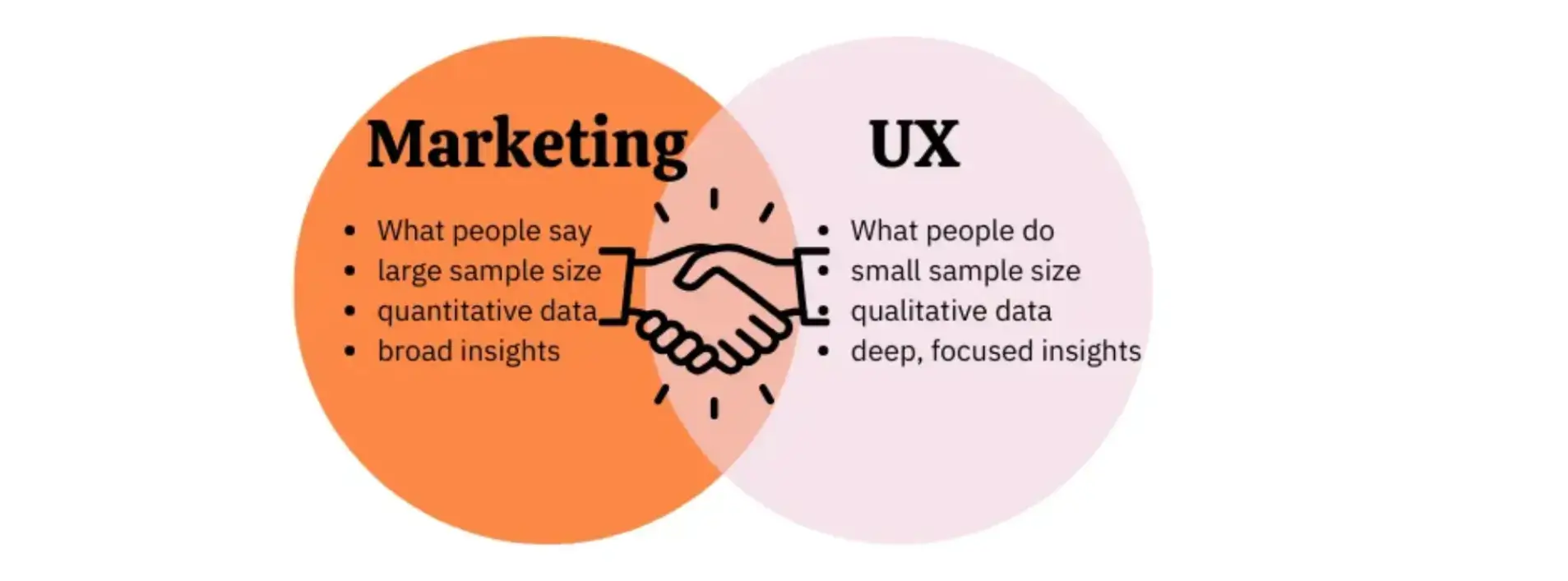
For example, a web design company in Dubai might use UX marketing to convert users by delivering a frictionless browsing experience on their landing pages.
-
How UX design fits into digital marketing
User experience design is typically handled by a team that’s separate from the marketing department. They focus on developing smooth and straightforward interactions for website and app users.
The UX team must understand the pain points of your users and the goals they want to achieve.
Your marketing team creates content that appeals to, engages with, and compels your target audience. Good UX design ensures that the experience doesn’t detract from the message and reduces potential friction in the sales pipeline.
A combined approach, like UX marketing, goes one step further. Collaboration between your UX and marketing teams is required to create user-converting interactions.
What Makes Up an Excellent UX?
Enterprise generative AI is only going to gain users by helping them reach their goals.
Likewise, your web store or mobile app should do the same. This may be the bare minimum, so what makes a “good” or “excellent” user experience?
Here are some of the most crucial elements you need to consider when designing your website’s UX:
- Usability: How easy and intuitive is your website or app to use? Can users accomplish their goals with minimal effort? For example, a visitor should be able to quickly find the product catalog and search bar when looking for a specific product.
- Accessibility: Is your e-commerce site accessible to diverse audiences with sight impairments or other disabilities? Every page and app asset needs to be audited for accessibility. Features include alt text for images, high-contrast fonts, and screen reader compatibility.
- Design: A clean design ensures users can find what they need without distractions. Use design elements such as color, font, and images that are on-brand and visually appealing.
- Functionality: Your websites and apps should function as intended. When users land on a 404 page or find a broken mobile app button, they’ll lose confidence in your brand. Deliver better user experiences by maintaining every clickable element of your digital assets.
- Helpful/relevant: Are you delivering useful content for your users? Are they finding information relevant to their search engine queries? Can mobile app users find answers to questions about refunds when making a purchase?
- Consistency: Does the design, copy, and functionality remain consistent across all digital interactions? When the rules change, users are confused, frustrated, and more likely to abandon your website or app.
- Convenient: Incorporate technology that creates more convenient experiences when possible. Some examples of tech you might consider using voice activation, visual search, and QR codes. These features reduce friction for users and strengthen relationships with your brand.
What is the Difference Between UX Marketing and CX Marketing?
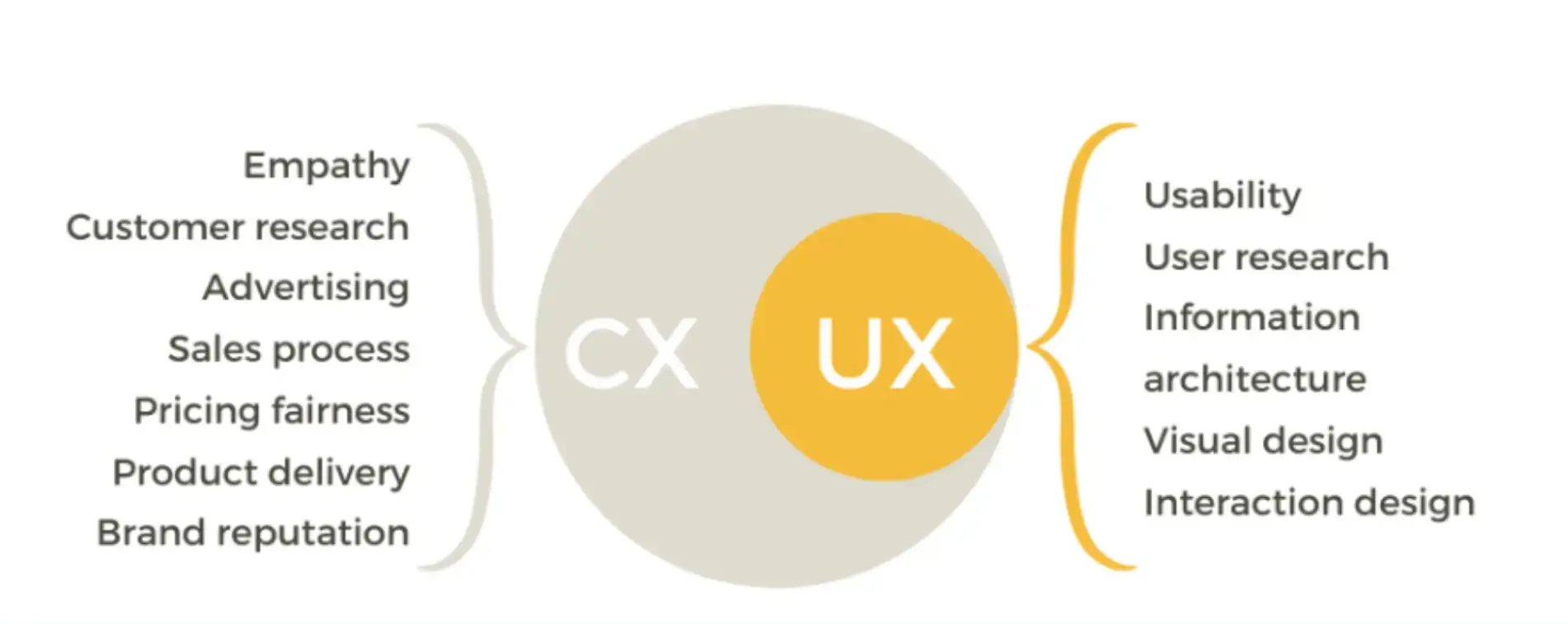
Source: UXtweak
So far, we’ve explored UX design and hits role in marketing strategy. But what about customer experience (CX) marketing? Isn’t it the same as UX marketing? Well, not quite.
Customer experiences entail every interaction in a customer’s journey. CX interactions include sales calls and in-person touchpoints, as well as using your website, digital product, or mobile app.
Comparatively, UX marketing has a narrower focus, encircling experiences, user goals, and interaction.
CX marketing deals with the big picture of how customers interact with your brand. UX marketing focuses on how users experience your digital products and online content.
Why is UX Marketing Important?
If you run an e-commerce business, UX is crucial for attracting, nurturing, and converting customers. Any business with an online presence needs to deliver consistent and convenient interactions.
Let’s check out some of the benefits of implementing a UX marketing strategy.
- Better customer experience: Deliver content that prioritizes a better user experience over promotion. Customers enjoy experiencing what your brand can deliver as much as or more than learning about your products.
- Greater engagement: Meet user needs better and convert through engaging interactions.
- Improved conversion rates: An intuitive UX reduces friction during the customer journey. If you are unsure of your UX's intuitivity, hire a UX audit agency to ensure that the steps are simple, straightforward, and easy to digest. Prospects can focus on the benefits rather than be distracted by things like poor website functionality.
- Raise brand reputation: A consistent UX helps improve your brand reputation on social proof channels such as review sites and increase lead generation.
- Increased loyalty and retention: 88% of customers value experience as much as products and services. Nurture and build stronger customer relationships with UX-focused marketing.
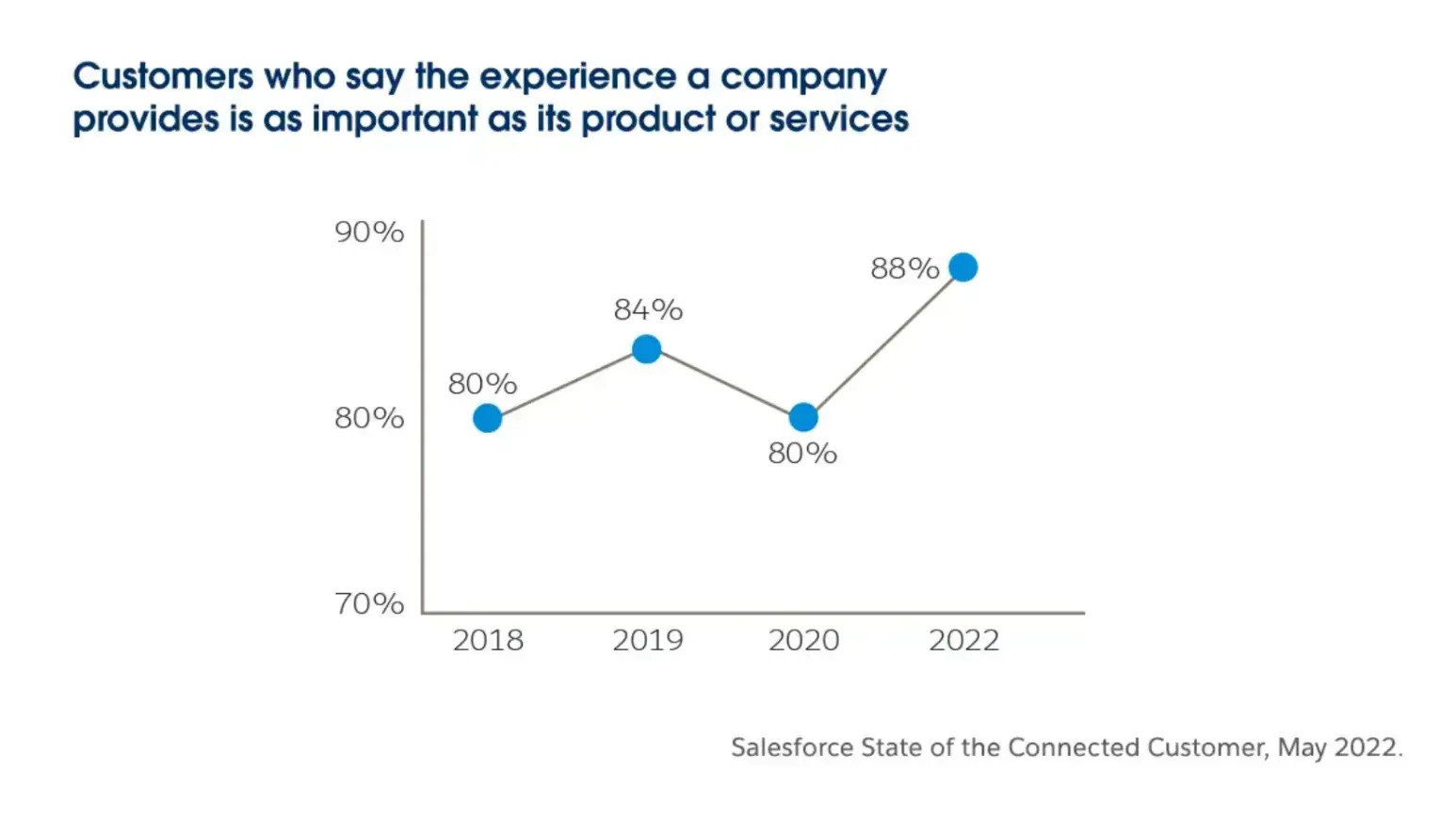
Source: Salesforce
- Higher lifetime value: Loyal, happy customers will stick with your brand longer and make repeat purchases.
- Differentiate from competitors: Deliver better digital touchpoints and become an “experience” brand. Focusing on the users also helps you identify and solve specific customer pain points.
Tips to Master UX Marketing as a Solopreneur or Startup
Here are some UX marketing best practices for your e-commerce startup or other business:
-
Listen to users
No one can tell you about the UX as well as your users can. Engage with your audience through direct feedback channels like user experience surveys.
Create interactive social media posts with live polling and comment sections. Use feedback tools to gather valuable insights and discover hidden pain points.
-
Boost communication
Your startup may have many people wearing multiple hats.
Alternatively, your team may have clearly defined roles and responsibilities. In either case, you want to keep communication channels open while developing a UX marketing strategy.
Constant communication prevents the formation of silos that will only hinder your efforts. Use team messaging and project management tools to keep everyone up-to-date with your UX strategy.
-
Share data and insights
A UX strategy only works as intended when information and data are shared freely. Communication opens the door. You can streamline collaborative data-sharing by centralizing UX and marketing data analytics.
Compile and share key user data and research findings across your entire team — whether it’s a team of one or dozens! Information sharing keeps everyone updated for better alignment and decision-making.
-
Audit website and mobile app
Regular website audits can uncover usability issues and opportunities for improvement.
A good place to start is mobile optimization. Ensure every web page is optimized for mobile devices, as nearly 55% of all website traffic comes from a mobile device.
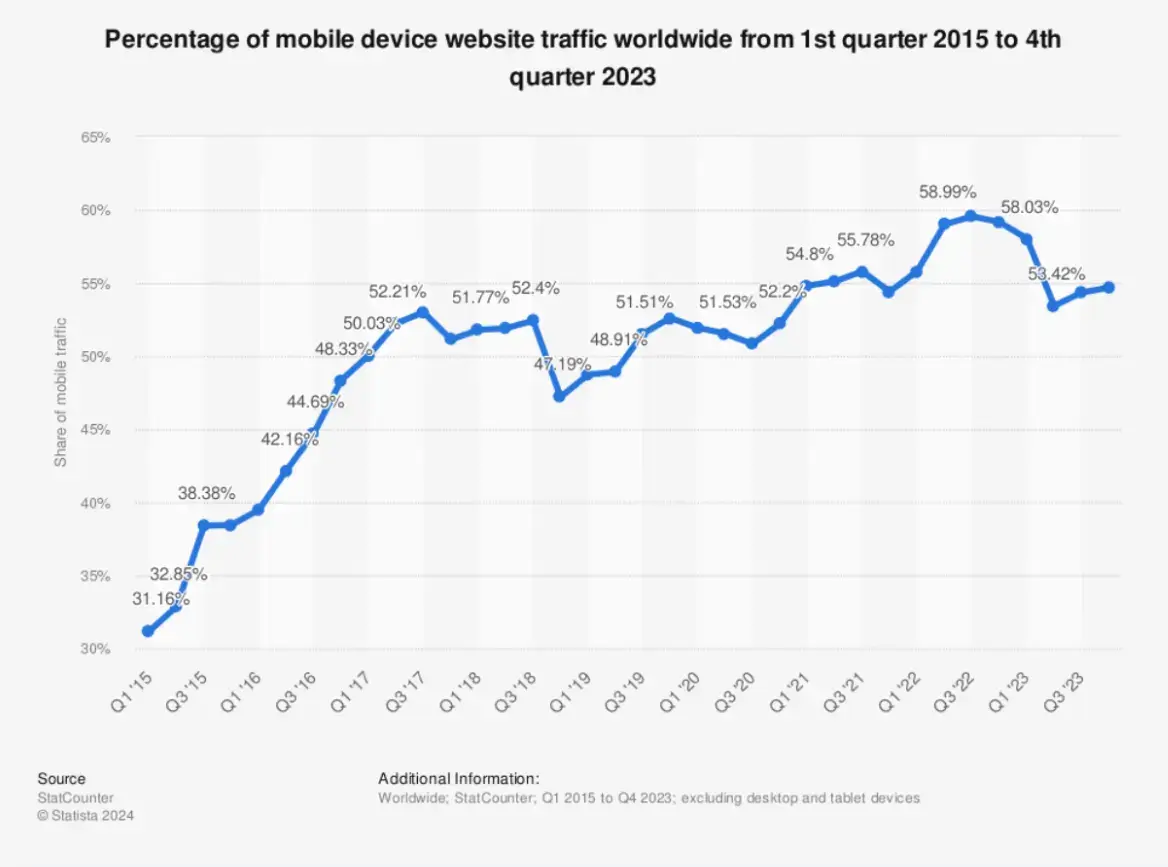
Source: Statista
Other routine tests include checking for broken links and testing performance with tools like Google PageSpeed Insights. Audits help you keep the UX consistent, functional, and usable.
-
Use the right research methodologies
Good UX marketing begins with competent research. Nowadays, you have multiple UX research tools to help you with your research.
Use the following methodologies to enhance both the UX and your marketing tactics:
-
-
Usability testing
-
Conduct usability tests to identify friction points that may frustrate users.
Basic navigation difficulties can end a customer's interest in your brand. Identify if key interactions, such as the checkout process or account creation, are easy to use.
-
-
User behavior testing
-
You can’t read users’ minds but can make inferences based on their actions.
Tools like eye tracking and session recording offer insights into how users interact with your website or app. User tracking apps reveal patterns and pain points you can address.
For example, a heat map might show that users hover in the top right corner of the site.
You discover that most users naturally look for the shopping cart button in the wrong place. This suggests that you should move the button's placement.
-
-
Buyer personas
-
Create detailed buyer personas that capture the demographics, motivations, and needs of your target audience. Like with all things UX marketing, cross-departmental collaboration is the path.
Developing joint personas captures a holistic view of your audience.
An integrated approach ensures everyone is working to put the user first. Joint buyer or user personas can guide both UX and marketing strategies, ensuring they align with real user profiles.
-
-
A/B testing
-
How can you test new insights? In marketing, there’s nothing quite as simple as trusty A/B testing—pit competing elements, such as layout, wording, and visuals, against one another.
Determine which version gives users a better experience and increases conversion rates.
-
-
User or customer journey maps
-
Develop user journey maps to visually represent the steps your audience must take to achieve their goals and reach conversion.
Journey maps highlight bottlenecks and potential problem areas. They can also help you spot opportunities to enhance the experience.
-
-
Empathy maps
-
An empathy path helps you better understand your users. It divides UX into four quadrants: Said, Done, Thought, and Felt.
Use the information from your other research methods to fill in the blanks and map out each user interaction. Then, design UX around the empathy maps and build marketing campaigns that address user pain points.
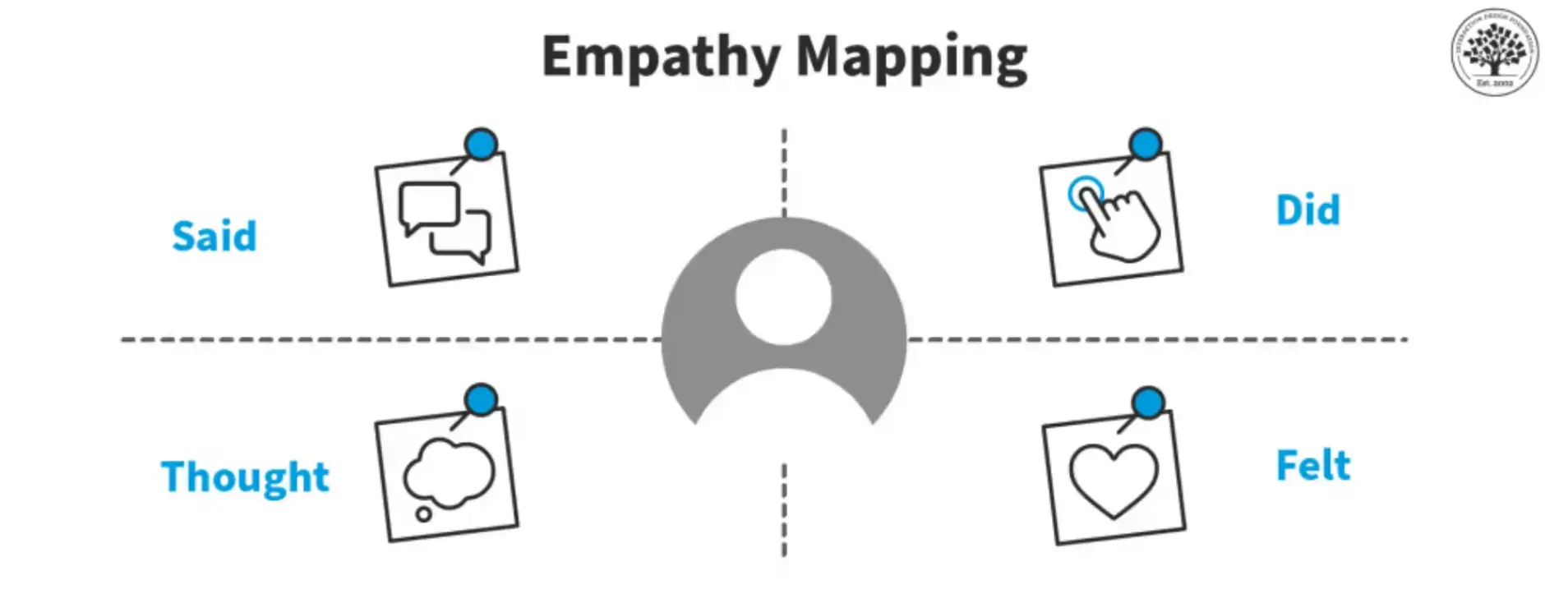
Source: Interaction Design Foundation
-
Build experiences
Focus on crafting experiences that aren’t just functional but memorable and engaging.
Add interactive and dynamic content, such as videos and animations. Boost experiences with gamification tactics, such as quizzes or reveal buttons for promo codes.
Personalization is another way to improve the UX for impactful interactions.
A Statista survey showed that 80% of respondents found personalized experiences increased consumer spending. Consider using AI tools to create personalized interactions, such as those in AI and healthcare.
If users remember how easy it was to find a niche product on your site, they’ll be back again the next time.
FAQs about UX Marketing
1. Why should I use UX marketing?
UX marketing can benefit your business by improving customer experience and conversion rates.
You’ll also benefit from increased brand reputation, and your customers will be more likely to remain loyal. It will also help you set yourself apart from the competition.
2. How is UX marketing different from CX marketing?
CX marketing covers every interaction customers have with your brand, from participating in sales calls and using your mobile app to interacting with your staff in person.
UX marketing, on the other hand, has a narrower focus as it covers how your customers interact with your digital products, such as your website and mobile app.
3. What metrics should I keep track of when doing UX marketing?
As UX marketing is a long-term approach, it’s important to track more than just conversion rates as, at the beginning, you may see a fall in conversion.
This is because you won’t be solely focusing on your targets for the next month.
So, keep track of metrics like:
- Cost of acquisition
- Customer retention
- Customer lifetime value
- Repeat order value
Tracking these metrics will help you see how much you’re benefiting from UX marketing.
Create Stronger Customer Relationships with UX Marketing
Consumers today are looking for better brand experiences.
Many aspects of our lifestyle have become virtual as e-commerce looks to overtake the brick-and-mortar shopping experience. What does that mean for your startup? The user experience is the brand experience.
Unite your UX design and marketing efforts for a synergistic strategy.
UX marketing speaks to the needs of your users. It engages them with helpful, convenient, and intuitive interactions. A UX approach also helps differentiate your business from the sea of competition.
Author Bio
Cohere is a leading enterprise AI platform. We build enterprise-grade frontier AI models and products designed to solve real-world business challenges. Our products are cloud-agnostic to meet companies wherever their data is stored and offer the highest levels of security, privacy, and customization with on-premises and private cloud deployment options.


